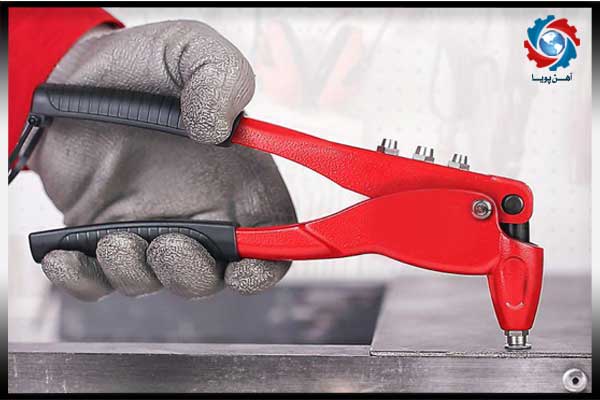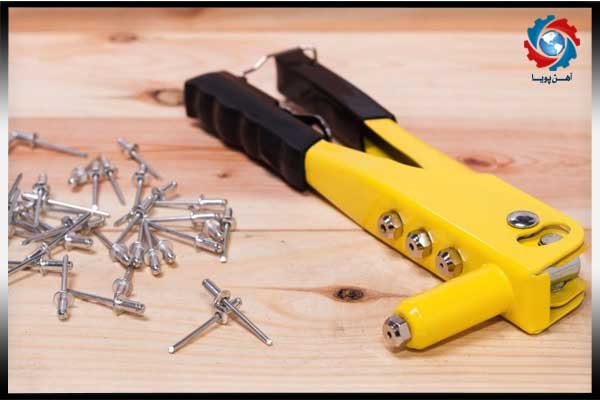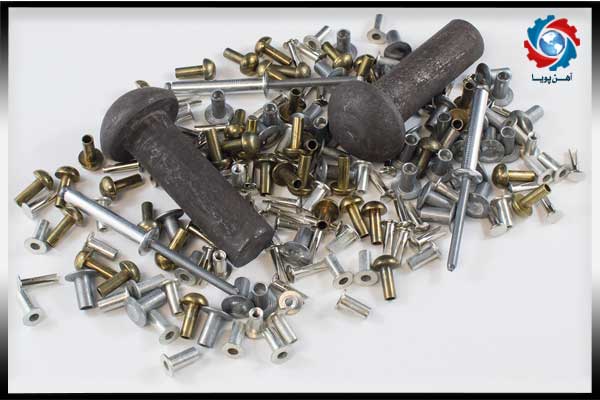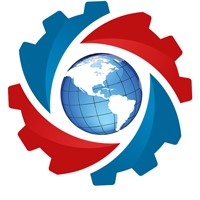
In metal industries, joining different parts is one of the most fundamental technical operations. Among various joining methods, riveting is one of the oldest, most effective, and economical techniques, especially widely used for connecting sheet metals. Sheet metal riveting plays a vital role in many industries, including automotive, construction, household appliances, and industrial equipment. In this article by Pooya Export, we provide a comprehensive overview of sheet metal riveting, its types, advantages, disadvantages,applications, and key considerations.

A rivet is a mechanical fastener used to create a permanent connection between two or more metal sheets. A typical rivet consists of a body and a head. During the riveting process, the rivet is inserted into pre-drilled holes in the sheets, and then pressure is applied to deform its tail end, forming a second head that secures the joint firmly in place.

Riveting offers several advantages over other joining methods such as welding or screwing:
1.Permanent connection without heat: Unlike welding, riveting does not require high temperatures, thus preserving the metallurgical properties of the metal sheets.
2.High vibration resistance: Riveted joints provide excellent resistance to vibration and mechanical stress.
3.Suitable for non-weldable materials: Some materials that are difficult to weld can be effectively joined using rivets.
4.Easy to perform: Riveting is a simpler and more cost-effective method than welding.
Rivets come in different types based on their design and application:
1. Solid Rivet : The most common type, consisting of a solid metal shaft with a pre-formed head. After insertion, the tail is deformed with a hammer or special tool to form a second head. These rivets are commonly used in aircraft, shipbuilding, and heavy industry.
2.Hollow and Semi-Hollow Rivets : These rivets have a partially or fully hollow shaft, reducing their weight and simplifying installation. They are ideal for applications in home appliances and light-duty assemblies.
3. Explosive Rivets : Used in areas where access to the back side of the workpiece is not possible. When exposed to heat or electric current, a small explosion deforms the tail, securing the rivet.
4. Blind Rivets : Also known as pop rivets, they are used when access is available only from one side. A mandrel inside the rivet is pulled to expand the end and complete the connection.
1.Drilling the sheets: The first step involves drilling or punching aligned holes in the sheets. The hole diameter must match the rivet precisely.
2.Inserting the rivet: The rivet is inserted through the hole, leaving the head exposed on one side.
3.Applying pressure: Using a manual or pneumatic tool, the tail end is deformed to form a second head.
4.Inspecting the joint: The final joint is visually and mechanically inspected to ensure a strong, secure connection.

To carry out a proper riveting operation, the following tools are typically used:
1.Manual or hydraulic rivet gun
2.Riveting hammer
3.Punches and drilling tools
4.Hole and rivet diameter gauges
In lightweight metal structures such as roof panels, doors, and windows, riveting provides a fast and cost-effective joining solution.
Riveting is commonly used in vehicle body construction as a heat-free and strong joining method.
Aircraft, ships, and submarines often rely on riveting due to its reliability and strength in critical structures.
Rivets are used in assembling components of refrigerators, washing machines, stoves, and other appliances to enhance durability.
To ensure quality and safety, several international standards regulate riveting operations:
ASTM F468: Specifications for non-ferrous metal rivets
DIN 7338: German standard for hollow rivets
ISO 15977: International standard for blind rivets
When selecting a rivet, the following criteria should be considered:
Material of the sheets (Aluminum, Steel, Copper, Stainless Steel)
Load and stress on the joint
Environmental conditions (humidity, temperature, corrosion)
Access type (one-side or two-side access)
Despite its benefits, riveting may have some limitations in certain applications:
Need for precise drilling, which can be time-consuming
Irreversible connection, requiring destruction to disassemble
Lower flexibility compared to screws
With the advancement of industrial automation, traditional manual riveting is increasingly being replaced by automated riveting machines. These systems offer consistent, high-speed, and high-quality connections, especially in modern production lines. The development of advanced materials and composite rivets is also expanding the scope of riveting in new applications.
Sheet metal riveting is a reliable method for permanent connections in a wide range of industries. By understanding different types of rivets, proper execution methods, and international standards, manufacturers can enhance the durability and efficiency of their metal structures. At Pooya Export, we use state-of-the-art equipment and expert knowledge to provide various metal products and professional riveting services tailored to both domestic and international industrial needs.

Ahan Pouya with more than a decade of best-selling experience, adheres to professional and ethical principles in the field of selling and buying at inside and outside the borders of Iran, helping you in the steel industry.